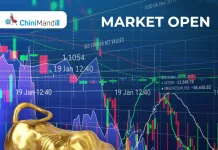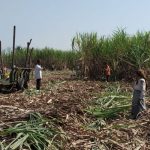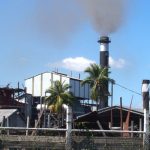The future of the past
The sugar futures market closed out Friday with October/2022 at 17.93 cents per pound. The funds reduced their positions to almost zero, losing influence in the short term over the price trajectory. With more sugar being produced by the mills in response to a weak hydrous market and the need for additional hedge against March/2023, NY should have difficulty staying above 18 cents per pound. The steady white sugar market has given support to the raw sugar market. Hydrous has recovered some over the week and is trading at only 350 points of discount (it has already been 500 once).
Edward Lorenz (1917-2008) was an American mathematician, philosopher and meteorologist fascinated by the climate changes since he had been a child, which led him to design complicated mathematical equations to help with weather forecasting. These studies, which he developed in the 1960’s at the Massachusetts Institute of Technology (MIT), were the embryo of what was later called the Chaos Theory. Simply put, the theory stated that small early mutations of each variable of his mathematical model would ultimately produce pretty different final results. It’s what is called the Butterfly Effect.
Just as a mental exercise, I thought about what would happen to the fuel market in Brazil if we hadn’t had the Covid-19 pandemic. I will explain. In February/2022, at the start of the pandemic, the consumption of Otto Cycle fuel was at a record number of 54.2 billion liters in the accumulated of the last twelve months. This consumption pointed to an annualized growth of 3.9% against the previous year, in line with the yearly growth of the previous decade (February/2020 vs. February/2010), which was 3.8%.
Supposing that, mutatis mutandis, the consumption seen in February/2020 had kept the same pace seen in the decade’s average. That way, today we would have a consumption of 59 billion of liters (Otto Cycle), that is, 7 billion of liters above the accumulated consumption of twelve months seen at the end of last July.
In February/2020, ethanol (anhydrous and hydrous) represented 48.3% of the Otto Cycle consumption. Roughly, without the pandemic, today we would have an additional ethanol demand of about 3.4 billion liters. There certainly wouldn’t be enough to meet the demand and the sugar world market, a natural indicator of arbitrage, would show which product the mill should produce. However, nothing like that happened, evidently. So, what’s the point of discussion?
I understand that the pandemic concealed a problem related to sugarcane availability that we will face sooner or later and we just don’t experience it now because of the pandemic. Brazil doesn’t have enough raw material to meet the domestic fuel (ethanol) demand when it returns to consumption patterns seen before Covid-19 and maintain its market share in the world sugar market at the same time.
The consumption level (Otto Cycle) today is the same as that of a year before the pandemic, that is, we regressed to the level of 40 months ago. If the consumption increases – from now on – by half of what it was growing before the pandemic, we will only get to the point of consumption of February/2020 in 26 months, that is, in November/2024.
However, things change. The terrible energy crisis Europe is going through and will go through in the coming winter will force people to consume less, not to keep places as warm as they used to. It’s really a war situation. They won’t buy oil from Russia, as retaliation to the war with Ukraine, but Putin is selling it to India and China, which will refine and sell it back to Europe.
The Economist newspaper touches on a very important point, in the face of the ideas of changing reference price, interferences on the market to hold back prices and the like. Brazil has experiences with insanities like these that are gimmicks for populist governments, like the one in Brasilia. They don’t work.
The newspaper says that “it would be crazy to make long-term decisions about the design of the energy systems in the middle of chaos. Keeping the same market mechanism is essential to encourage investment in new capabilities and innovation. Finding new sources of energy as well as the transition to a system of cleaner energy is imperative. The wrong response might lead governments to bankruptcy and get Europe’s energy industry stuck in the past”.
It seems pretty clear that in the near future we have a huge window of opportunities for renewable energies which ethanol is a part of. And in order to wrap up this speculation with some food for thought, what we need to ask is how the sugar-alcohol sector will get ready for a demand that promises to be huge while India is focused on producing ethanol in order to get to 20% in the mix with gas until 2025. Also, if there is – a plausible thought – a recovery of the global economy and of the sugar consumption (growing in Asia and Africa per capita) while India decreases the availability of the product for export and Europe redoes its math about the production cost of white sugar, who will supply the world market?
Unless we have a lasting world recession and a flight of exasperated black swans over the energy market, it is pretty hard to imagine a bearish sugar/ethanol binomial over the next 2-3 crops. The arbitrage between sugar and ethanol should be narrow and very sensitive to any spark that might light up the market. But until then we will have to sail the short-term rough seas carefully. Especially in Brazil that’s what’s ahead for us with a new government. Hold on tight because the waves can knock us down.
Have a nice weekend.
To read the previous episodes of World Sugar Market – Weekly Comment, click here
To get in touch with Mr. Arnaldo, write on arnaldo@archerconsulting.com.br












